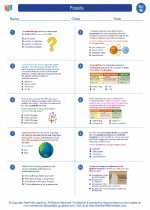Blood
Blood is a specialized bodily fluid that supplies essential substances such as nutrients and oxygen to the cells and carries waste products away from those same cells. It is composed of cells suspended in a liquid called plasma, and it plays a crucial role in maintaining homeostasis within the body.
Composition of Blood
Blood is composed of several different types of cells suspended in a liquid matrix called plasma. The cellular components include red blood cells (erythrocytes), white blood cells (leukocytes), and platelets (thrombocytes). The plasma is mainly composed of water, but also contains proteins, electrolytes, hormones, and waste products.
Functions of Blood
Blood performs several vital functions in the body, including:
- Transporting oxygen and nutrients to cells
- Carrying waste products away from cells
- Regulating body temperature
- Maintaining pH balance
- Assisting in immune function and clotting
Red Blood Cells (Erythrocytes)
Red blood cells are the most abundant cells in the blood and are responsible for transporting oxygen from the lungs to the body's tissues. They contain hemoglobin, a protein that binds to oxygen, giving blood its red color. Red blood cells are produced in the bone marrow and have a lifespan of about 120 days.
White Blood Cells (Leukocytes)
White blood cells are part of the body's immune system and are involved in defending against infections and foreign invaders. There are different types of white blood cells, each with specific functions such as phagocytosis, antibody production, and immune response regulation.
Platelets (Thrombocytes)
Platelets are small, disc-shaped cell fragments that play a key role in blood clotting. When a blood vessel is damaged, platelets adhere to the site and release substances that promote clot formation, helping to stop bleeding.
Blood Types
Blood is classified into different types based on the presence or absence of specific antigens and antibodies. The ABO blood group system and the Rh factor are the most important blood group systems in human blood transfusion. Understanding blood types is crucial for blood transfusions and organ transplants to avoid adverse reactions.
Study Guide
To study the topic of blood, consider the following key points:
- Understand the composition of blood, including its cellular and plasma components.
- Learn about the functions of blood and how it contributes to maintaining homeostasis in the body.
- Explore the roles of red blood cells, white blood cells, and platelets in the circulatory system and immune response.
- Investigate the different blood types and their significance in medical practices such as blood transfusions and organ transplants.
- Consider the disorders and diseases related to blood, such as anemia, leukemia, and hemophilia, and their impact on overall health.
By understanding the intricacies of blood, students can gain insight into the vital role it plays in sustaining life and the significance of blood-related medical interventions.
.◂Science Worksheets and Study Guides Eighth Grade. Fossils

 Activity Lesson
Activity Lesson
 Worksheet/Answer key
Worksheet/Answer key
 Worksheet/Answer key
Worksheet/Answer key
 Worksheet/Answer key
Worksheet/Answer key
 Worksheet/Answer key
Worksheet/Answer key
 Vocabulary/Answer key
Vocabulary/Answer key
 Vocabulary/Answer key
Vocabulary/Answer key
